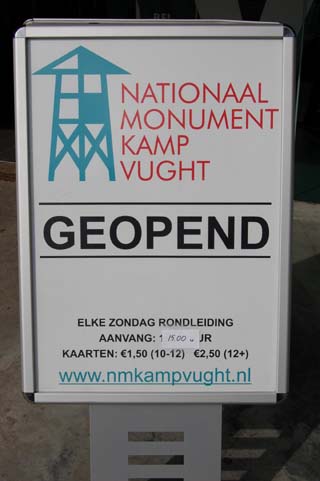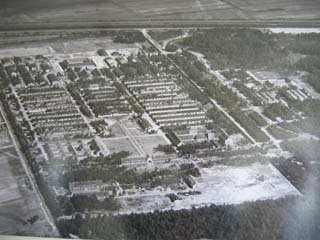Important note
Photos provided on this website are not an endorsement of any political idea or of war. War is one of the most regrettable human activities.
All photos on this page are copyright Robert Mary and may only be reproduced with my express permission. You may contact me here
Historical information

Introduction
During WW2
Camp Vught was the only SS concentration camp outside of Nazi Germany
(except Natzwiller in France). Unlike other Dutch
camps, Camp Vught was modelled after the camps in Germany and was placed
under the command of the SS Headquarters in Berlin. The camp in Vught
was “necessary because the camps in Amersfoort and Westerbork could
not accommodate the increasing number of prisoners”.
Camp statistics
The construction of the “Konzentrationslager Herzogenbusch”,
as camp Vught officially was called, began in 1942. Construction of the
camp was not finished at the end of 1942 when the first famished and
beaten prisoners arrived. Several hundred prisoners died the first six
months due to miserable conditions.
Approximately a total of 31.000 persons were imprisoned in the camp for
short or longer periods between January 1943 and September 1944. In addition
to 12.000 Jews, the camp held amongst other political prisoners, resistance
fighters, hostages, Sinti and Roma (Gypsies), Jehovah’s witnesses,
homosexuals, black marketers and criminals. Of these more than 750 children,
women and men died of hunger, sickness and abuse, or they were executed
at the execution area just outside of the camp.
Bunker tragedy
When one of the women from
Barracks 23B was imprisoned in the “Bunker” (the
prison within the camp), some of the other women protested. In order
to punish the women, Commandant Grünewald of Camp Vught ordered
74 women to be put into confinement in cell 115, an area of 9 square
meters (97 suqare feet). When the door was opened the next morning, ten
women had suffocated to death.
Children's
transports
Approximately 12.000
Jews were transported from Vught to the extermination camps. Notorious
are the “two children’s transports” on June 6th and
7th 1943. In total 1.269 Jewish children were deported from Camp Vught
via Westerbork to Sobibor in Poland. They were put into the gas chambers
shortly after their arrival.

The official
website of the museum stands here.
Official Authorities of the museum can be contacted there
Location information
The camp was evacuated in September 1944. A new function was given to the grounds almost immediately after the liberation of Southern Holland. Thousands of persons were temporarily housed: evacuated Germans, suspected Dutch collaborators and war criminals. Currently a prison, the Molukken residential area, two barracks of the Dutch army and National monument Vught are located on the former camp area (surface area 350.000 square meters). All the barracks used in the Molukken residential area in the 1950s were taken down in 1992 in order to make way for new housing.
On highway A2 take exit A65/N65 in the direction of Tilburg. On the N65 take exit Cromvoirt/Ijzeren. Thereafter turn right on the third street called Lunetenlaan. At the end of the road you reach the front entrance of the "National Monument Kamp Vught".
Personal note
The crematorium is in its nearby authentic state.
The historically reconstructed prisoners’ barracks and a number
of watchtowers are there. Is also present the reconstructed cell 15 where
the “bunker tragedy” took place.
The Memorial center is accessible for wheelchairs.